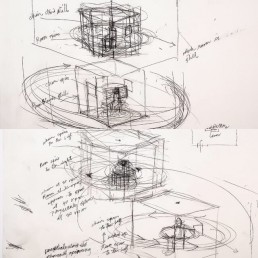Artland’s Daily Art Pick
Every day collectors at Artland share variety of artworks from around the world, both from their personal collections as well as pieces they’ve seen in a recent gallery opening or got inspired by on the web.
In this feature, we will be presenting you with the highlight of the day, the most interesting, inspiring or moving piece of art posted in the app in the last days together with name of the collector who shared it.
Check the collector’s profile in the app to see their entire collection!
Art Collector | Roberto Toscano
Artist | Paul McCarthy
About the artist
Paul McCarthy is widely considered to be one of the most influential and groundbreaking contemporary American artists. Born in 1945, and raised in Salt Lake City, Utah, he first established a multi-faceted artistic practice, which sought to break the limitations of painting by using unorthodox materials such as bodily fluids and food. He has since become known for visceral, often hauntingly humorous work in a variety of mediums – from performance, photography, film and video, to sculpture, drawing and painting.
During the 1990s, he extended his practice into installations and stand-alone sculptural figures, utilizing a range of materials such as fiberglass, silicone, animatronics and inflatable vinyl. Playing on popular illusions and cultural myths, fantasy and reality collide in a delirious yet poignant exploration of the subconscious, in works that simultaneously challenge the viewer’s phenomenological expectations.Whether absent or present, the human figure has been a constant in his work, either through the artist‘s own performances or the array of characters he creates to mix high and low culture, and provoke an analysis of our fundamental beliefs. These playfully oversized characters and objects critique the worlds from which they are drawn: Hollywood, politics, philosophy, science, art, literature, and television. McCarthy’s work, thus, locates the traumas lurking behind the stage set of the American Dream and identifies their counterparts in the art historical canon.
(text via hauserwirth.com)
